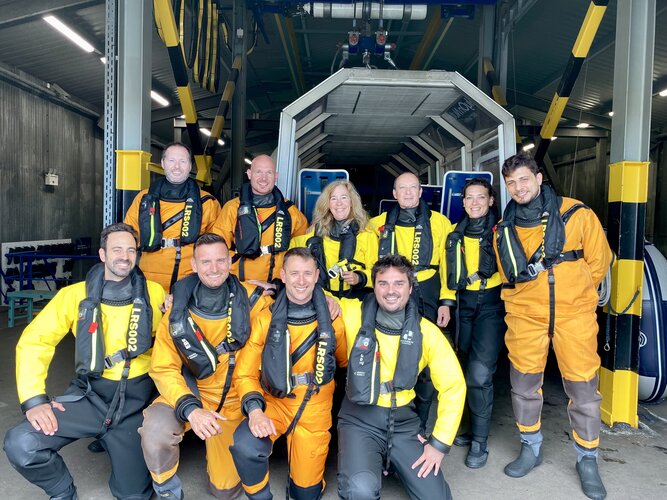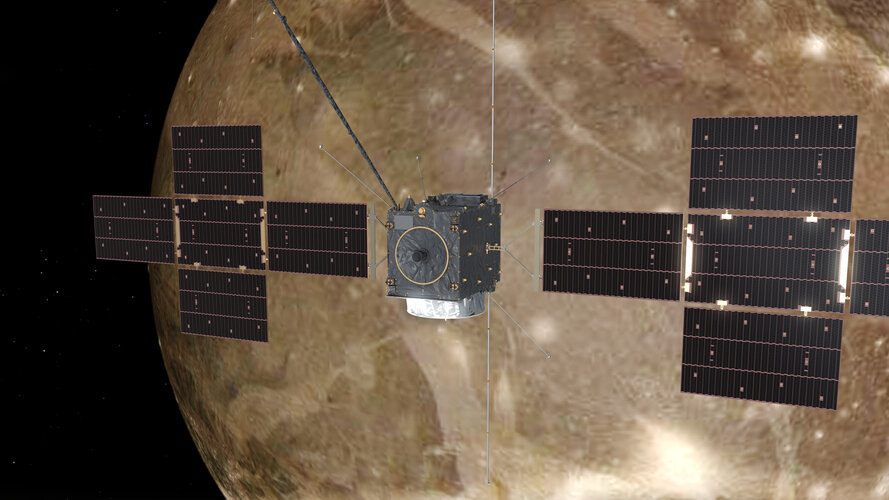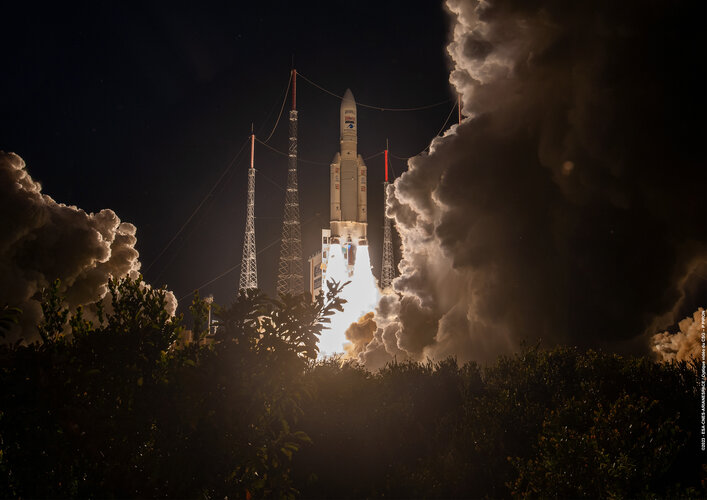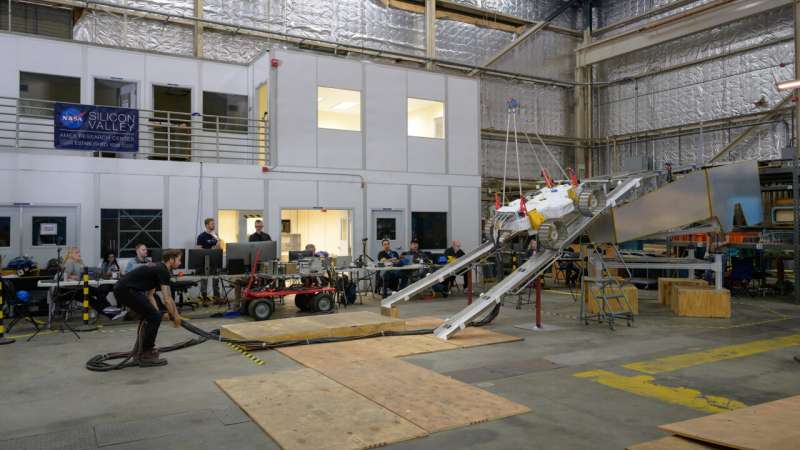Earth's day was a constant 19.5 hours for over a billion years
Thursday, 06 July 2023 09:32 A team of astrophysicists at the University of Toronto (U of T) has revealed how the slow and steady lengthening of Earth's day caused by the tidal pull of the moon was halted for over a billion years.
They show that from approximately two billion years ago until 600 million years ago, an atmospheric tide driven by the sun countered the effect of the moon, keeping Earth's rotational rate s
A team of astrophysicists at the University of Toronto (U of T) has revealed how the slow and steady lengthening of Earth's day caused by the tidal pull of the moon was halted for over a billion years.
They show that from approximately two billion years ago until 600 million years ago, an atmospheric tide driven by the sun countered the effect of the moon, keeping Earth's rotational rate s Webb locates dust reservoirs in two supernovae
Thursday, 06 July 2023 09:32 Researchers using NASA's James Webb Space Telescope have made major strides in confirming the source of dust in early galaxies. Observations of two Type II supernovae, Supernova 2004et (SN 2004et) and Supernova 2017eaw (SN 2017eaw), have revealed large amounts of dust within the ejecta of each of these objects. The mass found by researchers supports the theory that supernovae played a key role i
Researchers using NASA's James Webb Space Telescope have made major strides in confirming the source of dust in early galaxies. Observations of two Type II supernovae, Supernova 2004et (SN 2004et) and Supernova 2017eaw (SN 2017eaw), have revealed large amounts of dust within the ejecta of each of these objects. The mass found by researchers supports the theory that supernovae played a key role i Radio telescope observations confirm unintended radiation from large satellite constellations
Thursday, 06 July 2023 09:32 Scientists use the LOFAR telescope to observe low-frequency radio waves from satellites in large constellations for the first time. "Unintended electromagnetic radiation" emanating from onboard electronics in Starlink satellites was detected which could impact astronomical research. Further study is now ongoing.
For a study published in the Astronomy and Astrophysics journal, scientists fr
Scientists use the LOFAR telescope to observe low-frequency radio waves from satellites in large constellations for the first time. "Unintended electromagnetic radiation" emanating from onboard electronics in Starlink satellites was detected which could impact astronomical research. Further study is now ongoing.
For a study published in the Astronomy and Astrophysics journal, scientists fr Taking flight and making a splash
Thursday, 06 July 2023 07:37
Last week, members of ESA’s astronaut support teams participated in a helicopter underwater escape training. This training is mandatory for people involved in astronaut landing operations, including flight surgeons and photographers, who capture the key moments of an astronaut mission.
Hawkeye 360 satellites to monitor illegal fishing in Pacific Islands
Thursday, 06 July 2023 07:00
HawkEye 360, a commercial operator of remote-sensing satellites, announced July 6 it was selected by the government of Australia to help detect illegal fishing activity using radio-frequency sensors.
Solving the RIME deployment mystery
Thursday, 06 July 2023 06:45
When the RIME antenna on ESA’s Juice mission failed to deploy a few days after launch, the engineering teams faced the mighty challenge to understand the fault and rectify it. At stake was a chance to see inside Jupiter’s mysterious icy moons.
Europe-wide space-enabled aviation approaches take off
Thursday, 06 July 2023 05:56
Commercial air passengers across Europe will soon experience fewer flight delays and greener travel thanks to pilots being able to use satellites to route their planes.
Ariane 5 launches for the final time
Wednesday, 05 July 2023 22:24
One chapter in European access to space came to a close July 5 with the final launch of the Ariane 5, but the beginning of the next chapter faces additional delays.
Ariane 5 bows out in style: dual payloads, perfect delivery
Wednesday, 05 July 2023 21:40
Europe’s Ariane 5 rocket has completed its final flight, placing two payloads – the German aerospace agency DLR’s Heinrich Hertz experimental communications satellite and the French communications satellite Syracuse 4b – into their planned geostationary transfer orbits.
First ultraviolet data collected by European Space Agency's JUICE mission
Wednesday, 05 July 2023 19:13
NASA's moon rover prototype conquers steep, scary lander exit test
Wednesday, 05 July 2023 19:08
NASA's VIPER—short for Volatiles Investigating Polar Exploration Rover—recently completed another successful round of rigorous tests of the agency's first robotic moon rover's ability to drive off the Astrobotic Griffin lunar lander and onto the lunar surface. Called an egress, this hours-long operation is one of the most critical and trickiest parts of VIPER's 100-day mission. It could be even trickier if VIPER's off-ramps onto the moon are super steep or tilted due to uneven terrain.
Rivada gets more breathing room to deploy constellation
Wednesday, 05 July 2023 14:11
International regulators have waived a requirement for Rivada Space Networks to launch 10% of its proposed 576 satellites by September, boosting plans to fund the multibillion-dollar connectivity constellation.
Astrotourism—chasing eclipses, meteor showers and elusive dark skies from Earth
Wednesday, 05 July 2023 14:00
For years, small groups of astronomy enthusiasts have traveled the globe chasing the rare solar eclipse. They have embarked on cruises to the middle of the ocean, taken flights into the eclipse's path and even traveled to Antarctica. In August 2017, millions across the U.S. witnessed a total solar eclipse visible from Oregon to South Carolina, with a partial eclipse visible to the rest of the continental U.S.
The interest in astronomical events that this eclipse sparked will likely return with two eclipses visible in the U.S. during the next year—the annular solar eclipse on Oct. 14, 2023, and the total eclipse on April 8, 2024. But astro-tourism—traveling to national parks, observatories or other natural, dark-sky locations to view astronomical events—isn't limited just to chasing eclipses.
According to a recent study, 80% of Americans and one-third of the planet's population can no longer see the Milky Way from their homes because of light pollution.
Radio noise from satellite constellations could interfere with astronomers
Wednesday, 05 July 2023 10:45
Large satellite constellations can unintentionally generate electromagnetic noise, creating an additional source of interference for radio astronomers.
Time to act on light pollution, say leading experts at NAM conference
Wednesday, 05 July 2023 09:27 Action on light pollution is long overdue, campaigners will say at a panel event (3 July) at the National Astronomy Meeting in Cardiff. The panellists call for UK governments and local authorities to put policies in place to restore our view of the skies and to mitigate the impacts of excessive light at night on biodiversity and potentially human health.
Light pollution is rarely far from
Action on light pollution is long overdue, campaigners will say at a panel event (3 July) at the National Astronomy Meeting in Cardiff. The panellists call for UK governments and local authorities to put policies in place to restore our view of the skies and to mitigate the impacts of excessive light at night on biodiversity and potentially human health.
Light pollution is rarely far from 
